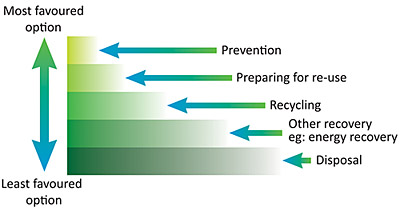Challenges of Encouraging Waste Reduction within the UK Construction Industry: An Investigation into Material Waste and Profitability (2014)
Encouraging Waste Reduction within the UK Construction Industry Dissertation – Over the years the construction industry has changed and this has resulted in increased production rates, changes in construction techniques and total quantities of materials used each year. The size of construction projects are now considerably much larger than they ever were. All of this has resulted increased demand for materials which has resulted in increased waste.
The UK construction industry as a whole uses over 400 million tonnes of natural resources per year of which 60 million tonnes is sent to landfill. This is a significant concern due to the fact that millions of pounds are being lost each year. In order to save money in construction projects and increase profits, wastage must be reduced.
This paper has identified the three main areas where material wastage is produced. Within these areas the client, architect and contractor have been identified to have a pivotal role in reduction methods. Reduction methods have been assessed to identify the most effective way in which to apply waste minimisation within the UK’s built environment.
The aim of the dissertation is to identify what stage within the project lifecycle material waste is created and analyse methods available that may be effective in reducing waste and saving money. The author will attempt to answer the hypothesis question through conducting a literature review, analysing a questionnaire and reviewing case studies. The findings will then be compared and contrasted to find how to reduce material wastage and at what stage in the project will it be most effective. The dissertation objectives are;
- To determine what stage of a construction project material waste is created
- To establish how wastage adds to project costs
- To evaluate the measures that can be applied to reduce material wastage
- To identify challenges of encouraging waste reduction within construction
- 15,000 words – 60 pages in length
- Excellent use of literature
- Good analysis of subject area
- Well written throughout
- Includes questionnaire
- Ideal for construction management students
1: Introduction and Rationale
Hypothesis
Aim
Objective of research
Contents
2: Literature Review
Waste in construction
Sectors of construction
Scale of construction
Types of waste
Waste disposal
Waste minimisation approach
Waste and stages of construction
Design
Procurement
Supply chain management
Construction
Challenges of waste minimisation
3: Research Methodology
Method of research
Literature review
Qualitative and quantitative research
Chosen methodology
Questionnaire
Questionnaire pilot study
Case studies
4: Data Analysis
Case study analysis
Case study one
Project overview
Waste reduction measures taken
Benefits to the project
Conclusions
Limitations and improvements
Case study two
Project overview
Waste reduction measures taken
Benefits to the project
Conclusions
Limitations and improvements
5: Discussion
Design waste minimisation
Procurement waste minimisation
Construction waste minimisation
Obstacles
6: Conclusions
Aim, objectives and hypothesis question
Design stage conclusion
Design stage recommendations
Procurement stage conclusion
Procurement stage recommendations
Construction stage conclusion
Construction stage recommendations
Overcoming obstacles: recommendations
Limitations of research
Recommendations for future research
References
Appendix

